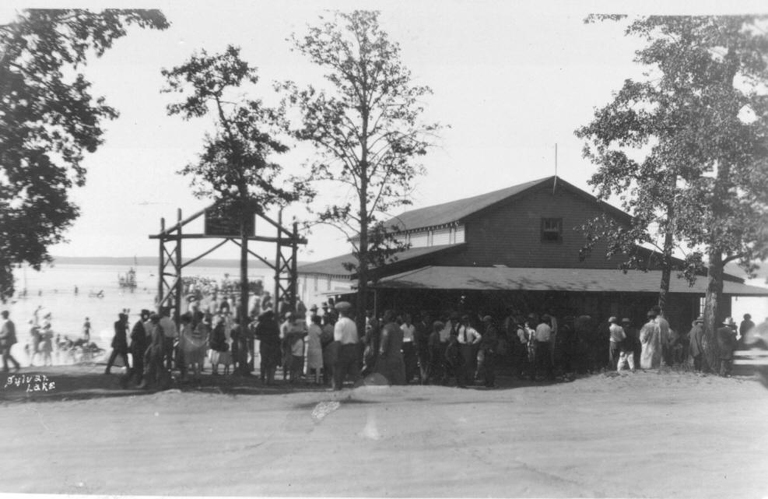Sylvan Lake is generally known as a very popular, family-friendly resort. However, in the late fall of 1923 it became the scene of one of the most controversial criminal cases in Alberta’s history.
On Nov. 20, 1923, Edgar Falkner was stabbed to death in his home by an intruder, Vilhelm Einar Hansen. The subsequent murder trial, followed by a change in verdict by the Alberta Court of Appeals, was widely debated across all of Canada.
Edgar Falkner was originally from Ontario, but moved with his wife, Mary Bell, to Penhold in 1909. In 1921, the Falkners moved to Sylvan Lake where Edgar began managing the Boathouse with his brother-in-law, Farquhar McCrimmon.
The Falkners bought a large two-storey home on 46 (Sesame) Street, which is still standing right across from the former boarding house operated by Mary Bell’s sister, Catherine and brother-in-law James Dingwall (now Hazzard County Bar and Grill).
Vilhelm Hansen had a very troubled life. His mother died when he was 10. He never saw his father after his mother’s death. He was frequently in trouble with the law. He was jailed for evading military service and then for robbery and housebreaking.
Finally, in the summer of 1923, he decided to emigrate to Canada to see if he could start anew. He worked for a while in Saskatchewan and Manitoba. He then set off for Alberta in late November for a prospective job with the Phoenix Lumber Company.
Upon arriving in Red Deer, he found out the lumber mill was still 160 km. farther west. Having spent all of his cash, he started walking his way towards the mill. By late evening, he had made it as far as Sylvan Lake.
He stated that he saw a dim light through the window of the Falkner house and thought that this was a hotel or lodging place. As it was now past midnight, he stated that he went into the house and went upstairs to find a room to sleep in.
At this point, Mary Bell, who had been visiting across the street at the Dingwalls, came home. Edgar had decided to stay at home with the children and was sleeping with them in a small bedroom on the main floor. Mary Bell briefly woke her family. She then proceeded up the back stairs with the youngest son in one arm and a lamp in the other.
At this point, a startled Hansen rushed by her on the stairs. Thinking that he was a burglar, she started screaming for her husband. As Edgar rushed out to grab the intruder, the lamp went out.
Edgar and Hansen grappled in the dark. Hansen pulled a knife and slashed Edgar repeatedly in the arms and chest. Eventually, he cut Edgar’s jugular vein.
Jim Dingwall rushed over to see what was happening. He grappled with Hansen on the front verandah, but Hansen got away.
An alarm was quickly raised. The Alberta Provincial Police, bolstered with armed posses, began a search for the assailant. Hansen was apprehended around noon near Eckville. His face and clothes were still covered in blood.
Speaking through an interpreter, Hansen did not dispute much of what had happened. However, he claimed he had only acted in self-defense. He insisted that he was not robbing the house, but rather had wanted a room to sleep in for the night.
In February 1924, Hansen was tried for murder. However, the hearing was moved to Wetaskiwin from Red Deer, because of the high local feelings against him, Nevertheless, on Feb. 12, 1924, the jury found him guilty of murder. Justice Ives then sentenced him to be hanged at the Fort Saskatchewan penitentiary.
Hansen’s lawyers quickly made an appeal to the Alberta Court of Appeals. On March 6, 1924, the three justices in Edmonton reversed the murder verdict. They convicted Hansen of the lesser charge of manslaughter and sentenced him to five years in the Prince Albert federal penitentiary. They also stipulated that Hansen be deported back to Denmark after his sentence was completed.
There was a widespread outcry over the decision. Many people said that it was another example of judges letting a murderer get off easy with a lesser sentence. The debate continued for years.



